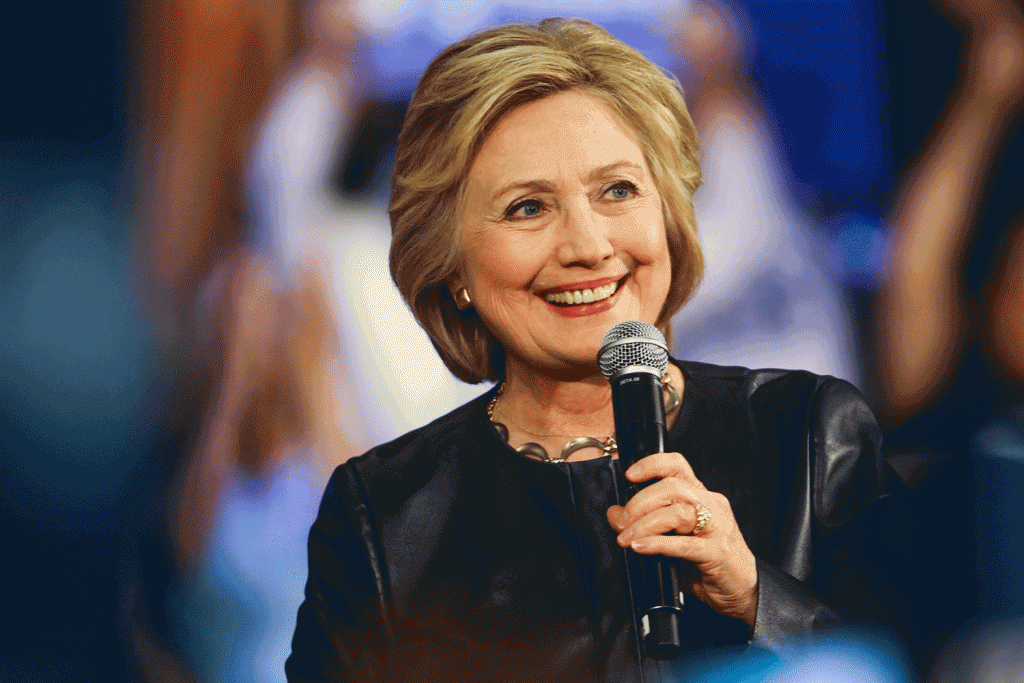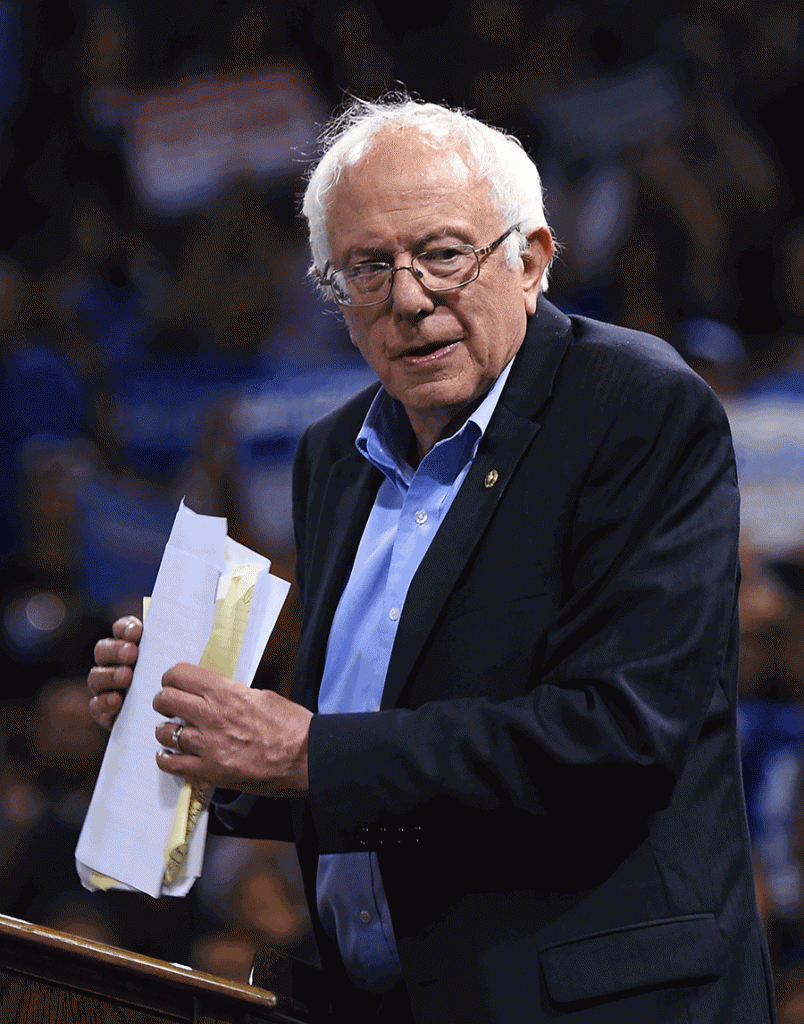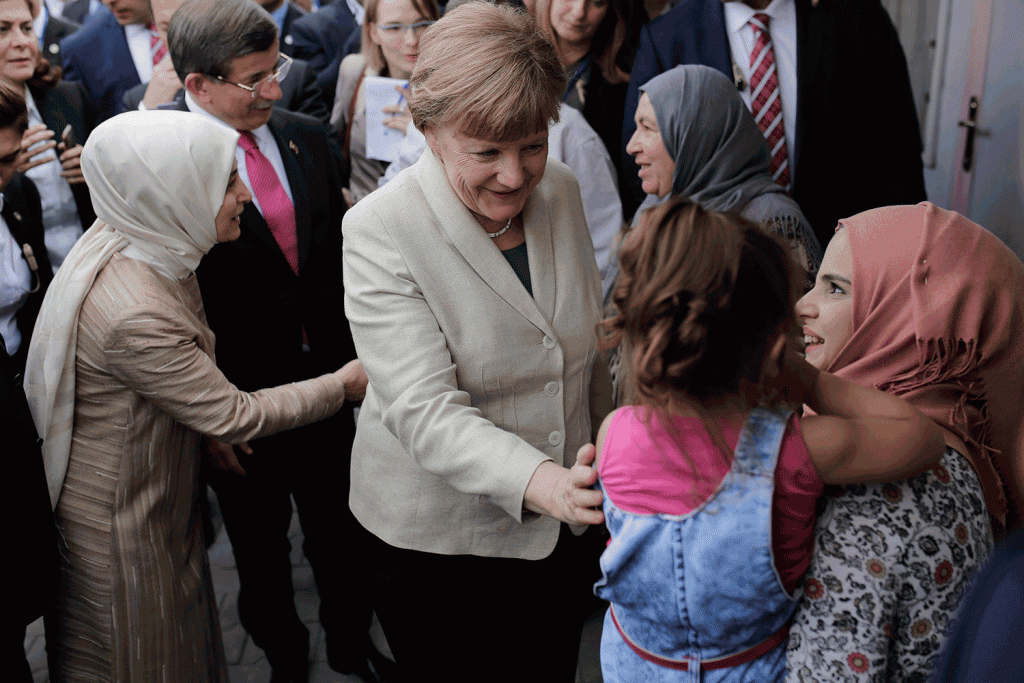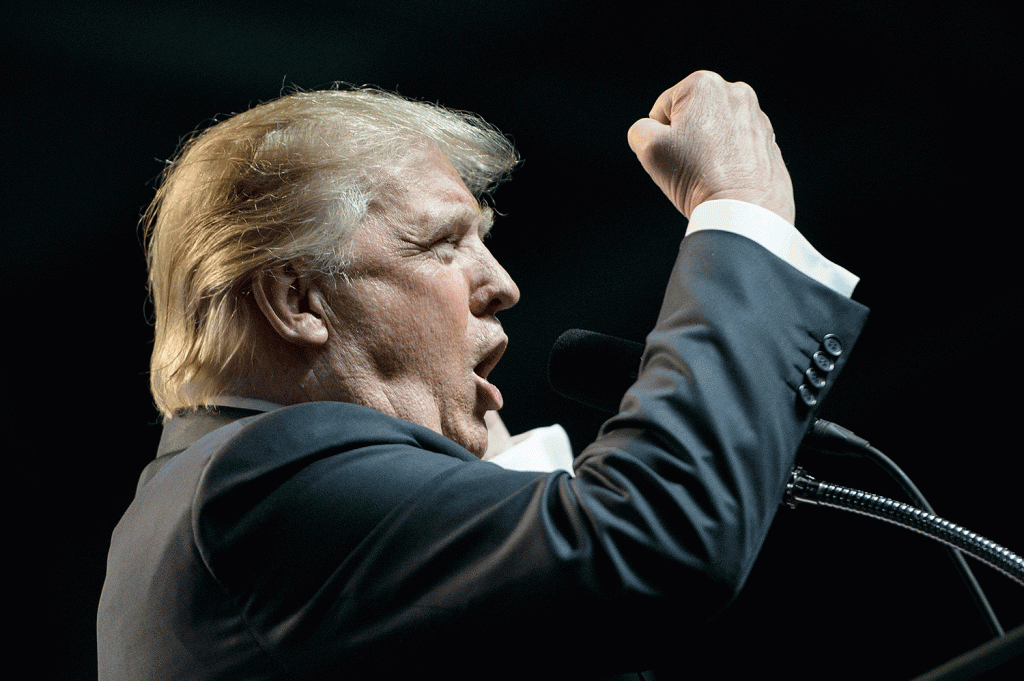American elections: Right Turn for the West?
By Mahir Ali | Newsbeat International | Published 8 years ago
This is how fascism comes to America,” a commentator recently wrote in The Washington Post, “not with jackboots and salutes (although there have been salutes and a whiff of violence) but with a television huckster, a phony billionaire, a textbook egomaniac ‘tapping into’ popular resentments and insecurities, and with an entire national political party — out of ambition or blind party loyalty, or simply out of fear — falling into line behind him.”
One could be excused for assuming this broadside emanates from a left-wing source, but in fact its author is the decidedly neoconservative Robert Kagan, roundly berating the US Republican Party for its “attempt to treat Donald Trump as a normal political candidate.”
Having seen off 16 rivals for the party’s presidential nomination, Trump does indeed pose a serious challenge to the Republican establishment, many of whose grandees have been reluctant to endorse this interloper whose candidacy was initially dismissed as little more than a joke. Even after Trump comfortably won the New Hampshire primary, no one seriously thought that the punchline would be his emergence as the Grand Old Party’s presumptive nominee well ahead of next month’s GOP convention in Cleveland, Ohio.
The final barrier to Trump’s ascendancy fell when Ted Cruz pulled out of the race in early May following yet another devastating primary defeat, and the relatively inconsequential John Kasich followed suit. Cruz was popular among Christian fundamentalists but loathed by all too many senior members of his party; shortly before he pulled out, John Boehner, a former speaker of the House of Representative, described him as “Lucifer in the flesh.”
 Some members of the GOP hierarchy have tentatively been drifting towards embracing Trump, with some reservations, as the party nominee — to the consternation of Kagan and his ilk. A few still hold out the hope of turning the tables on Trump at the Cleveland convention, but that is hardly a realistic prospect. Fewer still have been willing to openly hint at voting for Hillary Clinton as a means of undermining the threat that Trump is seen to pose.
Some members of the GOP hierarchy have tentatively been drifting towards embracing Trump, with some reservations, as the party nominee — to the consternation of Kagan and his ilk. A few still hold out the hope of turning the tables on Trump at the Cleveland convention, but that is hardly a realistic prospect. Fewer still have been willing to openly hint at voting for Hillary Clinton as a means of undermining the threat that Trump is seen to pose.
That, in fact, would seem to be a logical course of action, given Clinton’s determination to broadly uphold the status quo isn’t starkly at odds with mainstream Republicanism. But fear of accelerating the GOP’s disintegration serves as a deterrent. What all too many Republican critics of Trump fail to acknowledge, at least publicly, is that he is in many ways a natural consequence of the party’s lurch towards extremism in the Obama years.
Given Trump’s tendency to articulate contradictory positions, occasionally within the same speech, it isn’t always easy to tell exactly what he stands for, but from immigration and race relations to Islam, he knows which buttons to push in order to appeal to the lowest common denominator. At the same time he has offended significant segments of the electorate — from women to African Americans and Latinos. On the face of it, that would appear to reinforce what has hitherto been the received wisdom, namely that Clinton will be able to look forward to a landslide in November.
On the other hand, more recent opinion polls point to a much closer race, with some even showing Trump and Clinton neck and neck. This is partly a consequence of the fact that the latter’s likability has not increased during the course of the campaign: any number of commentators, including generally sympathetic ones, have remarked on the contrast between her lackadaisical backers and the enthusiasm among supporters of her ostensibly socialist rival Bernie Sanders, who has proved particularly popular among younger voters.
For at least a couple of months now, Sanders’ chances of overhauling Clinton’s decisive lead in terms of delegates have been statistically negligible, yet he keeps winning, or almost winning, one primary after another, and has thus far stuck to his promise to stay in the race until next month’s Democratic national convention in Philadelphia, refusing to give in to mounting pressure to “unify the party” by endorsing Clinton right away.
 As in the case of Trump, Sanders has built his appeal on militating against the status quo. But whereas Trump’s support emanates in large part from the least educated segments of the population, Sanders’ base is quite the opposite, with college students in particular backing him with a passion that is conspicuously absent from the Clinton campaign. Apart from a reasonably clear ideological divide between the two Democratic candidates, Sanders is taken at his word even among those who disagree with his social-democratic inclinations, whereas Clinton inspires a phenomenal degree of distrust. (It was back in 1999, while her husband, Bill, was still president, that the late Christopher Hitchens delivered a book-length diatribe against the Clintons which he titled No One Left to Lie To.
As in the case of Trump, Sanders has built his appeal on militating against the status quo. But whereas Trump’s support emanates in large part from the least educated segments of the population, Sanders’ base is quite the opposite, with college students in particular backing him with a passion that is conspicuously absent from the Clinton campaign. Apart from a reasonably clear ideological divide between the two Democratic candidates, Sanders is taken at his word even among those who disagree with his social-democratic inclinations, whereas Clinton inspires a phenomenal degree of distrust. (It was back in 1999, while her husband, Bill, was still president, that the late Christopher Hitchens delivered a book-length diatribe against the Clintons which he titled No One Left to Lie To.
Hillary Clinton’s record in positions of influence or power leaves much to be desired, not least in terms of her consistent backing for predictably disastrous military interventions abroad, and her vow last month to reintroduce the economic spirit of the 1990s is unlikely to give much comfort to those who recall Bill Clinton’s dedication to deregulation reinforcing the basis for the financial catastrophe that struck in 2007-08.
For a decisive victory in November, Clinton will need the backing of a substantial proportion of Sanders’ supporters, and she will no doubt also seek to win the votes of Republicans disenchanted by the idea of a Trump presidency. It’s not an easy balancing trick to pull off: large segments of the electorate are seemingly desperate for change, whereas she represents the pro-establishment option of effectively standing still. Small numbers of those “feeling the Bern” have indicated they would rather vote for Trump if Sanders isn’t the Democratic nominee. Most won’t go that far, but they may well be inclined to stay home on polling day. Anti-Trump Republicans may well behave likewise.
Add to that the fact that vote-suppression tactics disproportionately target African Americans and Latinos, which could potentially affect results in the crucial swing states, and the prospect of a Trump presidency is impossible to dismiss as completely unrealistic. Besides, although it’s perfectly possible Trump could spur sympathy for his opponent should he be openly misogynistic in his verbal assaults between now and November, he could quite conceivably opt for a cleverer strategy and score palpable hits in the process.
President Trump is a profoundly unpleasant idea on any number of levels, but it’s one the world may have to learn to live (or die) with. That’s not all there is to worry about, though.
The American electorate is for the most part unlikely to have noticed that international endorsements for Trump have come from some of the most alarming features of the European political landscape. This wouldn’t matter very much were it not for the fact that far right parties are on the rise across the continent, and already in power in some countries in eastern Europe — notably Hungary and Poland, where Viktor Orban’s Fidesz and the Law and Justice Party, respectively, have both proclaimed their “illiberalism” with pride.
The trend is by no means restricted to the former communist bloc, though. The Front National in France under Marine Le Pen — which has expressed its enthusiasm for Trump — could be a serious contender for the presidency in the next election. In Austria, the ruling social democrats have responded to Norbert Hofer’s near-win in the recent presidential contest by indicating they would be willing to share power with the far right; Hofer eventually lost to his left-wing rival but it was a very close call. A comparable trend can be witnessed across Scandinavia — once the most progressive region of the continent — with far right parties on the rise and, all too often, the supposed social democrats responding with a sharp right turn instead of putting up resistance.
 Arguably the most worrying development of all in Europe has been the rise of the explicitly anti-Muslim Alternative for Germany, given the nation’s Nazi background. It was perhaps in part to reflect a clear distance from that atrocious past that Chancellor Angela Merkel sought to set a moral standard by welcoming refugees from conflicts in Syria and elsewhere. Recent opinion polls suggest that the overwhelming majority of Germans are inclined to go along with that, and the anti-refugee Pegida party’s neo-fascist shows of strength on the street invariably provoke far larger counter-demonstrations. Yet there has clearly been a backlash.
Arguably the most worrying development of all in Europe has been the rise of the explicitly anti-Muslim Alternative for Germany, given the nation’s Nazi background. It was perhaps in part to reflect a clear distance from that atrocious past that Chancellor Angela Merkel sought to set a moral standard by welcoming refugees from conflicts in Syria and elsewhere. Recent opinion polls suggest that the overwhelming majority of Germans are inclined to go along with that, and the anti-refugee Pegida party’s neo-fascist shows of strength on the street invariably provoke far larger counter-demonstrations. Yet there has clearly been a backlash.
In Greece, which has served as the first stop for refugees fleeing Turkey, the third largest party in parliament is the explicitly neo-fascist Golden Dawn. Greece is at the same time something of an exception, in that a decidedly left-wing party, Syriza, won a general election early last year on the promise of ameliorating the austerity measures proposed by the European Union (EU). It was ultimately bludgeoned into submission, with Germany wielding the biggest cudgel — but with the clear support of the very same eastern European nations that have subsequently been resisting EU directives on refugees, sometimes (as in the case of Hungary) on the basis that admitting a few thousand Muslims would somehow dilute the Christianity of the nation in question. They have thus far faced no serious repercussions.
The Greeks, meanwhile, re-elected Syriza even after it had betrayed its earlier vows, possibly on the basis that despite its failure in negotiating a better deal with Brussels, at least it had tried very hard to live up to its platform, and was thus a better bet than the previously mainstream socialist and conservative parties that had led Greece into an avoidable economic mess in the first place. Whether Podemos in Spain can inspire similar confidence in this month’s electoral re-run remains to be seen. It is intriguing nonetheless that the two most formidable left-wing political forces on the continent have emerged in nations that were under fascist dictatorships well into the 1970s, whereas the far right has more or less gone mainstream primarily in former communist dictatorships. The exception, of course, is Britain, where the Labour Party’s left turn under Jeremy Corbyn is much derided by many of its members of parliament but solidly backed by the party membership. Unfortunately, among traditional social democratic parties in the west, Corbyn stands out as an exception.
The right-wing trend, on the other hand, could be stretched to include Ukraine and Russia, which are at loggerheads but under the thumb of comparably authoritarian regimes. For what its worth, Vladimir Putin excites considerable empathy among the far right in various European countries and tends to be looked upon kindly by Donald Trump. Not only is Putin an elected president but his popularity ratings among Russians are the envy of western politicians. And he can do pretty much whatever he likes without having to worry about parliamentary restraint, let alone a reprimand.
The emergence of President Trump alongside a consolidation of the far right trend across other parts of the West would put the world in a position more dangerous than any it has experienced since the 1930s. The advent of President Hillary Clinton would not be particularly exciting, but it would be somewhat less alarming. The status quo may be disenchanting, but America’s capacity to do worse should not be underestimated — and the Clinton campaign would benefit were Hillary to offer Bernie a significant cabinet post. Either way, notwithstanding the deficiencies and disappointments associated with the present administration, there will likely be cause to miss Barack Obama when he’s gone.
Mahir Ali is an Australia-based journalist. He writes regularly for several Pakistani publications, including Newsline.



